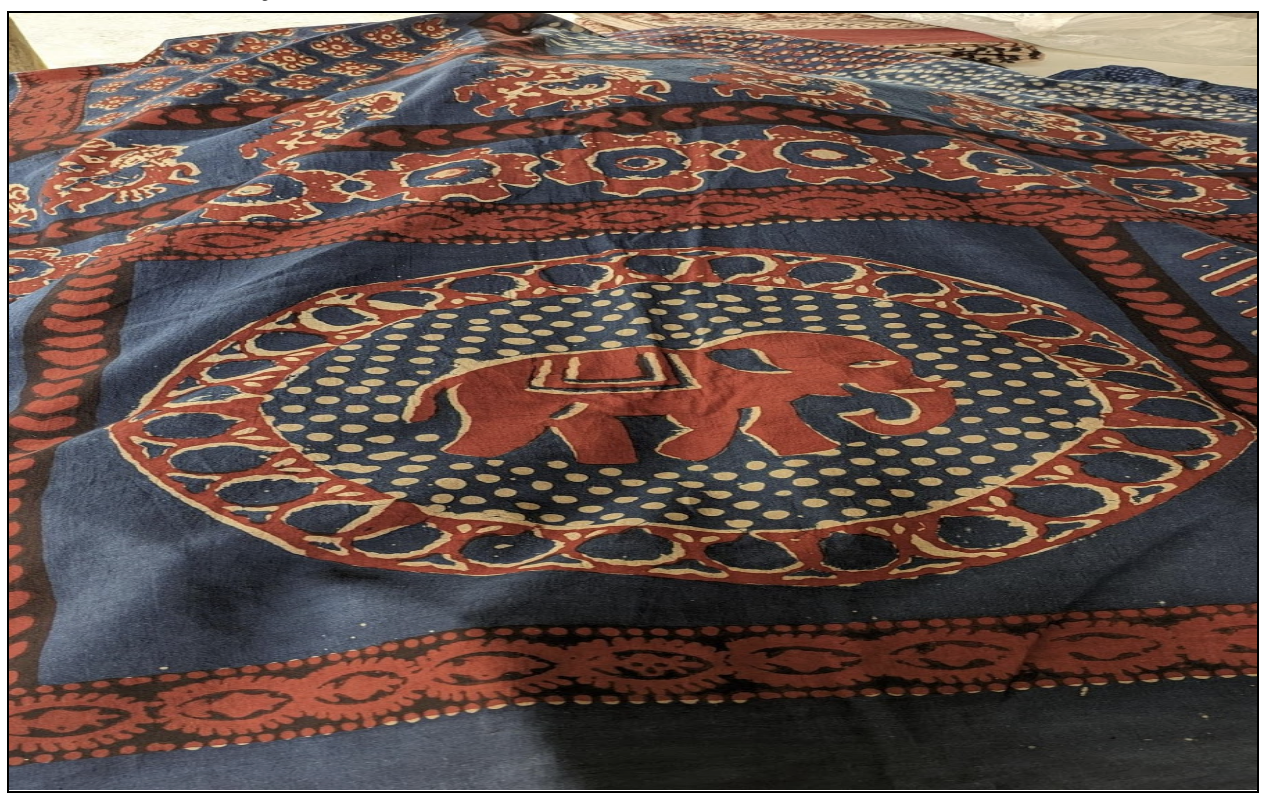News Excerpt:
On April 30th, ajrakh, a well-known craft of resist-dyeing from Kutch, was granted a Geographical Indication (GI) tag, marking its authenticity and providing legal protection to arts from specific regions. While this achievement is a reason for joy, another lesser-known craft from the same region, bela block printing, remains in obscurity.
More About the News:
Bela printing refers to a traditional art form originating from Bela village in the Rapar block of Kutch, Gujarat, India.

Bela Printing:
- It is a form of block printing where intricate designs are carved onto wooden blocks and then stamped onto fabric to create decorative patterns. Bela Print, akin to Bagru Print, is a form of Mordant printing that employs a Hand Block Printing Technique.
- This traditional method involves the direct application of dyes onto cloth using hand-carved wooden blocks. Bela Print is renowned for its bold and graphic prints, often featuring vibrant red and black colors which are emblematic of the style. These hues are preferred for their exceptional color fastness.
- Moreover, the colors utilized in Bela printing are derived entirely from natural and vegetable sources. Originating from the Kutch, this art form has a rich history. Despite being a vanishing art, there is one remaining artisan, Mansukhbhai Khatri, who continues to practice this craft.
- Kachchh has long been associated with the production of Bela-style cloth, reflecting the enduring cultural heritage of the region. The materials essential for Bela printing include cloth, natural dyes sourced from natural resources, and hand-carved wooden blocks.
- The intricate process begins with washing the cloth in a river and then draining excess water in a small pit known as a "kundi," allowing the cloth to reach a semi-dry state. Simultaneously, the wooden blocks are soaked in dye.
- Once the cloth and blocks are dried under the sun, the printing process commences. The wooden blocks, now imbued with natural colors, are meticulously pressed onto the cloth within the outlines, creating the intricate Bela prints.
- This meticulous process not only preserves tradition but also yields stunning and enduring pieces of fabric that celebrate the artistry and heritage of Bela printing.
Challenges faced by Bela Printing:
- Modernization and Industrialization: The advent of modern machinery and industrialization has led to the rise of mass-produced textiles, which often offer cheaper alternatives to handmade Bela printed fabrics. This competition from mechanized production can threaten the livelihoods of artisans practicing Bela printing.
- Changing Consumer Preferences: With changing consumer tastes and preferences, there may be a declining demand for traditional handcrafted products like Bela printed fabrics. Younger generations may be more inclined towards modern, trendy designs rather than traditional motifs.
- Lack of Awareness and Promotion: Bela printing is often overshadowed by more widely recognized crafts, and there may be a lack of awareness about its cultural significance and unique artistic value. Insufficient promotion and marketing efforts can result in limited exposure and market access for artisans practicing Bela printing.
- Limited Market Access: Bela printing artisans, particularly those located in remote or rural areas, may face challenges in accessing markets for their products. Limited infrastructure, poor connectivity, and lack of distribution networks can hinder their ability to reach a broader customer base.
- Financial Constraints: Many artisans practicing Bela printing come from economically disadvantaged backgrounds and may lack access to financial resources or capital to invest in their craft. This can constrain their ability to purchase quality materials, upgrade equipment, or participate in training programs to enhance their skills.


